Frank Drake, astronomer, dies
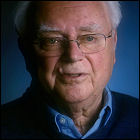 Astronomer Dr. Frank Drake, one of the founders of SETI (the Search for Extra-Terrestrial Intelligences), dies at the age of 92. His fascinating with searching for life on other worlds began at a young age, and defined much of his life and career. In the 1960s, as part of a lecture, he devised the Drake Equation, a formula for calculating a very rough estimate of the possible number of civilizations capable of communicating across interstellar distances; this equation has been debated and challenged over the years, as well as gaining mainstream recognition after being cited in popular science programming (such as Carl Sagan’s Cosmos) and science fiction as well. In the 1970s, Drake and Sagan joined forces to create the “messages in bottles” affixed to the earliest space probes expected to break free of the solar system, including the Pioneer plaques and the golden records attached to Voyagers 1 and 2.
Astronomer Dr. Frank Drake, one of the founders of SETI (the Search for Extra-Terrestrial Intelligences), dies at the age of 92. His fascinating with searching for life on other worlds began at a young age, and defined much of his life and career. In the 1960s, as part of a lecture, he devised the Drake Equation, a formula for calculating a very rough estimate of the possible number of civilizations capable of communicating across interstellar distances; this equation has been debated and challenged over the years, as well as gaining mainstream recognition after being cited in popular science programming (such as Carl Sagan’s Cosmos) and science fiction as well. In the 1970s, Drake and Sagan joined forces to create the “messages in bottles” affixed to the earliest space probes expected to break free of the solar system, including the Pioneer plaques and the golden records attached to Voyagers 1 and 2.
James Webb Space Telescope launched
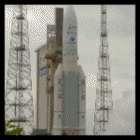 After well over a decade of development (and setbacks as the project fell in and out of favor with successive administrations of the U.S. government), the international James Webb Space Telescope is launched aboard an Ariane V rocket from the European Space Agency’s Kourou Space Center in French Guiana. Constructed and operated by NASA, the Webb Space Telescope is the larger successor to the Hubble Space Telescope, and its intricate, origami-like construction is expected to take a full month to deploy as the telescope travels to the L2 LaGrange point, well beyond the orbit of the moon. Its multi-segmented mirror is expected to see much more distant objects than Hubble was capable of resolving, possibly including the first galaxies to form in the history of the universe.
After well over a decade of development (and setbacks as the project fell in and out of favor with successive administrations of the U.S. government), the international James Webb Space Telescope is launched aboard an Ariane V rocket from the European Space Agency’s Kourou Space Center in French Guiana. Constructed and operated by NASA, the Webb Space Telescope is the larger successor to the Hubble Space Telescope, and its intricate, origami-like construction is expected to take a full month to deploy as the telescope travels to the L2 LaGrange point, well beyond the orbit of the moon. Its multi-segmented mirror is expected to see much more distant objects than Hubble was capable of resolving, possibly including the first galaxies to form in the history of the universe.
Charging the view of distant atmospheres
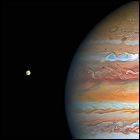 NASA and ESA announce that spectrographic analysis of Hubble Space Telescope data gathered during observations of Jupiter’s icy moon Europa reveals that Europa has a persistent atmosphere of water vapor, but only on the hemisphere of the moon that is opposite of the direction of its orbital motion. (This unusual effect had been predicted in computer modeling, but had not been directly observed until now.) The atmosphere is present in Hubble spectroscopy data as old as 1999 and as recent as 2015. The stability of the water vapor in the atmosphere is the real surprise find, since surface-based water was assumed to be in solid ice form.
NASA and ESA announce that spectrographic analysis of Hubble Space Telescope data gathered during observations of Jupiter’s icy moon Europa reveals that Europa has a persistent atmosphere of water vapor, but only on the hemisphere of the moon that is opposite of the direction of its orbital motion. (This unusual effect had been predicted in computer modeling, but had not been directly observed until now.) The atmosphere is present in Hubble spectroscopy data as old as 1999 and as recent as 2015. The stability of the water vapor in the atmosphere is the real surprise find, since surface-based water was assumed to be in solid ice form.
Arecibo Radio Telescope collapses
 The 57-year-old Arecibo Radio Telescope is destroyed when its 900-ton equipment platform, suspended over the massive dish built into a geographic feature near Arecibo, Puerto Rico, falls into the dish, causing catastrophic damage to both. The platform had been suspended by miles of steel cables from three towers over the dish, through a recent assessment of the ability of both cables and towers to bear the platform’s load had raised doubts that the facility could remain operational. As the decision had already been made to decommission and dismantle the Arecibo telescope, the facility had already been evacuated prior to the collapse. The towers holding the platform over the dish also suffer severe damage, rendering them structurally unsafe as well. Locals compared the sound of the event to that of an avalanche or an earthquake.
The 57-year-old Arecibo Radio Telescope is destroyed when its 900-ton equipment platform, suspended over the massive dish built into a geographic feature near Arecibo, Puerto Rico, falls into the dish, causing catastrophic damage to both. The platform had been suspended by miles of steel cables from three towers over the dish, through a recent assessment of the ability of both cables and towers to bear the platform’s load had raised doubts that the facility could remain operational. As the decision had already been made to decommission and dismantle the Arecibo telescope, the facility had already been evacuated prior to the collapse. The towers holding the platform over the dish also suffer severe damage, rendering them structurally unsafe as well. Locals compared the sound of the event to that of an avalanche or an earthquake.
Arecibo Observatory slated for demolition
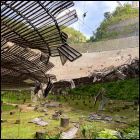 After being in operation for most of the past 57 years, the fate of the Arecibo Radio Telescope facility is sealed by the failure of two major tension cables suspending the 900-ton equipment platform over the dish carved into the Puerto Rican countryside. Engineering safety assessments reveal that other cables are on the verge of failure, which could lead to an “uncontrolled collapse” putting the lives of nearby researchers and engineers at risk. As a result, the Arecibo facility – originally a project of Cornell University but now managed by the University of Central Florida – is slated for demolition as soon as is safely possible, provided its aging superstructure doesn’t collapse under its own weight first. The observatory’s physical superstructure had been under close observation since suffering major damage from Hurricane Maria, which caused widespread destruction in Puerto Rico in 2017. The closure of the Arecibo facility marks the end of a significant era of radio astronomy.
After being in operation for most of the past 57 years, the fate of the Arecibo Radio Telescope facility is sealed by the failure of two major tension cables suspending the 900-ton equipment platform over the dish carved into the Puerto Rican countryside. Engineering safety assessments reveal that other cables are on the verge of failure, which could lead to an “uncontrolled collapse” putting the lives of nearby researchers and engineers at risk. As a result, the Arecibo facility – originally a project of Cornell University but now managed by the University of Central Florida – is slated for demolition as soon as is safely possible, provided its aging superstructure doesn’t collapse under its own weight first. The observatory’s physical superstructure had been under close observation since suffering major damage from Hurricane Maria, which caused widespread destruction in Puerto Rico in 2017. The closure of the Arecibo facility marks the end of a significant era of radio astronomy.
Professor Stephen Hawking, physicist, dies
 Widely regarded as one of the 20th and 21st centuries’ finest minds in the fields of theoretical physics and cosmology, Professor Stephen Hawking dies at the age of 76, having suffered from ALS (better known as Lou Gehrig’s Disease) for over 50 years. He far outlived the few years he was expected to live when he was diagnosed in 1963. In that time, he co-authored a 1970 paper which referred back to Einstein’s Theory of General Relativity to lend great credibility to the then-new (and not widely accepted) theory of the universe’s origins in a “big bang”. Later that same year he began working on research that would eventually lead to the theory that black holes would emit a signature radiation, dubbed Hawking radiation, though those emissions had yet to be observed directly at the time of Hawking’s death. His best-selling 1988 book, “A Brief History Of Time”, propelled Hawking (and his remarkable survival story) into the public eye, though by this time he was wheelchair-bound and reliant on a speech synthesizer to communicate with others.
Widely regarded as one of the 20th and 21st centuries’ finest minds in the fields of theoretical physics and cosmology, Professor Stephen Hawking dies at the age of 76, having suffered from ALS (better known as Lou Gehrig’s Disease) for over 50 years. He far outlived the few years he was expected to live when he was diagnosed in 1963. In that time, he co-authored a 1970 paper which referred back to Einstein’s Theory of General Relativity to lend great credibility to the then-new (and not widely accepted) theory of the universe’s origins in a “big bang”. Later that same year he began working on research that would eventually lead to the theory that black holes would emit a signature radiation, dubbed Hawking radiation, though those emissions had yet to be observed directly at the time of Hawking’s death. His best-selling 1988 book, “A Brief History Of Time”, propelled Hawking (and his remarkable survival story) into the public eye, though by this time he was wheelchair-bound and reliant on a speech synthesizer to communicate with others.
The seven worlds of TRAPPIST-1
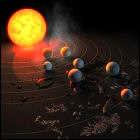 NASA announces the discovery, via the Spitzer Space Telescope, of a system of seven Earth-sized worlds orbiting the star TRAPPIST-1, only 40 light years from Earth’s solar system. Though water may exist in some state on all seven of the planets, three of them are thought to be orbiting within the “Goldilocks zone” in which liquid water would be abundant, making life possible on the surfaces of those planets.
NASA announces the discovery, via the Spitzer Space Telescope, of a system of seven Earth-sized worlds orbiting the star TRAPPIST-1, only 40 light years from Earth’s solar system. Though water may exist in some state on all seven of the planets, three of them are thought to be orbiting within the “Goldilocks zone” in which liquid water would be abundant, making life possible on the surfaces of those planets.
Vera Rubin, astronomer, dies
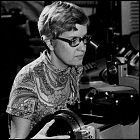 Pioneering astronomer Vera Rubin, whose research led to the discovery of dark matter, dies at the age of 88. In the 1960s and ’70s, Rubin found that the rate of galaxies’ rotation could not be accounted for unless galaxies contained, on average, ten times more mass than could be distributed among the visible stars in that galaxy. This research led her to propose the theory of dark matter in the 1970s, though she tried for many years to find – or at least rule out – any other possible explanations to the galaxy rotation problem.
Pioneering astronomer Vera Rubin, whose research led to the discovery of dark matter, dies at the age of 88. In the 1960s and ’70s, Rubin found that the rate of galaxies’ rotation could not be accounted for unless galaxies contained, on average, ten times more mass than could be distributed among the visible stars in that galaxy. This research led her to propose the theory of dark matter in the 1970s, though she tried for many years to find – or at least rule out – any other possible explanations to the galaxy rotation problem.
The new and improved Great Dark Spot
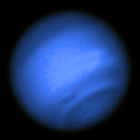 NASA’s Hubble Space Telescope confirms the observations of Earthbound astronomers with high-powered telescopes: a new dark atmospheric feature has emerged on the planet Neptune, signifying a major new storm system in the planet’s atmosphere. The new vortex feature emerges near the south polar area of Neptune, and was first observed by telescope in 2015.
NASA’s Hubble Space Telescope confirms the observations of Earthbound astronomers with high-powered telescopes: a new dark atmospheric feature has emerged on the planet Neptune, signifying a major new storm system in the planet’s atmosphere. The new vortex feature emerges near the south polar area of Neptune, and was first observed by telescope in 2015.
Hitomi lost
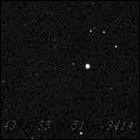 JAXA, the Japanese Space Agency, declares the Hitomi X-ray astronomy satellite a total loss, having lost all contact with it. Though the diagnosis of the evidence to date is ongoing, engineers conclude from the available data that Hitomi entered an uncontrolled spin and broke up in orbit. JAXA offers apologies not only to other countries’ space agencies who supplied equipment for Hitomi, as well as to astronomers who had hoped to use the satellite.
JAXA, the Japanese Space Agency, declares the Hitomi X-ray astronomy satellite a total loss, having lost all contact with it. Though the diagnosis of the evidence to date is ongoing, engineers conclude from the available data that Hitomi entered an uncontrolled spin and broke up in orbit. JAXA offers apologies not only to other countries’ space agencies who supplied equipment for Hitomi, as well as to astronomers who had hoped to use the satellite.
The moon of Makemake
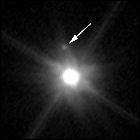 Astronomers reveal that Makemake, an icy dwarf planet orbiting in the distant Kuiper Belt region of the solar system, has a moon, first spotted in 2015 by a team using the Hubble Space Telescope. (The news comes just days after the 26th anniversary of Hubble’s launch.) With an estimated diameter of 100 miles (compared to the 870 mile diameter of its parent body), the satellite orbits Makemake at a distance of 13,000 miles, taking twelve days to complete one orbit. Previous observations failed to pick up on the dark, dim body due to the relatively bright glare of Makemake itself.
Astronomers reveal that Makemake, an icy dwarf planet orbiting in the distant Kuiper Belt region of the solar system, has a moon, first spotted in 2015 by a team using the Hubble Space Telescope. (The news comes just days after the 26th anniversary of Hubble’s launch.) With an estimated diameter of 100 miles (compared to the 870 mile diameter of its parent body), the satellite orbits Makemake at a distance of 13,000 miles, taking twelve days to complete one orbit. Previous observations failed to pick up on the dark, dim body due to the relatively bright glare of Makemake itself.
Hitomi breaks contact
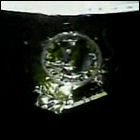 Japan’s Hitomi satellite, launched in February on a three-year X-ray astronomy mission, suddenly breaks contact with JAXA ground controllers when they begin power-up and checkout procedures. Only brief telemetry signals are received from Hitomi before it falls silent. JAXA initiates emergency procedures to contact Hitomi and diagnose the problem, though some telescopic observations from Earth indicate that pieces of the spacecraft have fallen away from the spacecraft itself.
Japan’s Hitomi satellite, launched in February on a three-year X-ray astronomy mission, suddenly breaks contact with JAXA ground controllers when they begin power-up and checkout procedures. Only brief telemetry signals are received from Hitomi before it falls silent. JAXA initiates emergency procedures to contact Hitomi and diagnose the problem, though some telescopic observations from Earth indicate that pieces of the spacecraft have fallen away from the spacecraft itself.
ASTRO-H / Hitomi
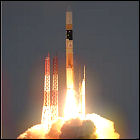 JAXA, the Japanese Space Agency, launches the ASTRO-H X-ray observatory satellite, nicknamed Hitomi, from Tanegashima Space Center. Carrying equipment provided by NASA and the Canadian Space Agency, Hitomi is intended to remain operational for three years, conducting X-ray astronomy from low Earth orbit. Though the launch proceeds without apparent problems, major technical issues will prevent Hitomi from fulfilling its mission objectives.
JAXA, the Japanese Space Agency, launches the ASTRO-H X-ray observatory satellite, nicknamed Hitomi, from Tanegashima Space Center. Carrying equipment provided by NASA and the Canadian Space Agency, Hitomi is intended to remain operational for three years, conducting X-ray astronomy from low Earth orbit. Though the launch proceeds without apparent problems, major technical issues will prevent Hitomi from fulfilling its mission objectives.
Mega-eruption on Io
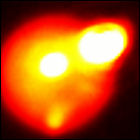 Astronomers using the Keck Observatory’s Hawaii-based telescopes and near-infrared cameras capture an image of a devastating volcanic eruption on Io, one of Jupiter’s largest moons (and known since 1979 to be very volcanically active). The eruption, unleashing enough molten material to reshape hundreds of square miles of Io’s surface, also reveals that the material erupted is hotter than any eruption in Earth’s recorded history. This is the most violent eruption seen to date in the solar system, and caps off two weeks of intense activity observed by the astronomers.
Astronomers using the Keck Observatory’s Hawaii-based telescopes and near-infrared cameras capture an image of a devastating volcanic eruption on Io, one of Jupiter’s largest moons (and known since 1979 to be very volcanically active). The eruption, unleashing enough molten material to reshape hundreds of square miles of Io’s surface, also reveals that the material erupted is hotter than any eruption in Earth’s recorded history. This is the most violent eruption seen to date in the solar system, and caps off two weeks of intense activity observed by the astronomers.
Pluto’s fourth and fifth moons named
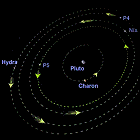 Two tiny, recently-discovered satellites of dwarf planet Pluto have new named ratified by the International Astronomical Union; P4 is renamed Kerberos and P5 is renamed Styx. The names – related to the “underworld” theme that has governed the naming of Pluto and its moons to date – overlooks a popular online vote that suggested one of the moons should be named Vulcan, after Mr. Spock’s home planet in Star Trek. Kerberos, discoverd in 2011, is believed to be approximately 20 miles in diameter and orbits Pluto at a distance of roughly 37,000 miles. Styx, first sighted in 2012, is even smaller, with an estimated diameter of 15 miles, orbiting only 1,200 miles from Pluto, making it the innermost satellite (a distinction previously held by Pluto’s near-twin, Charon). NASA’s New Horizons spacecraft will have the opportunity to see the new moons up close when it does a flyby of Pluto in 2015.
Two tiny, recently-discovered satellites of dwarf planet Pluto have new named ratified by the International Astronomical Union; P4 is renamed Kerberos and P5 is renamed Styx. The names – related to the “underworld” theme that has governed the naming of Pluto and its moons to date – overlooks a popular online vote that suggested one of the moons should be named Vulcan, after Mr. Spock’s home planet in Star Trek. Kerberos, discoverd in 2011, is believed to be approximately 20 miles in diameter and orbits Pluto at a distance of roughly 37,000 miles. Styx, first sighted in 2012, is even smaller, with an estimated diameter of 15 miles, orbiting only 1,200 miles from Pluto, making it the innermost satellite (a distinction previously held by Pluto’s near-twin, Charon). NASA’s New Horizons spacecraft will have the opportunity to see the new moons up close when it does a flyby of Pluto in 2015.
SOFIA spots a black hole
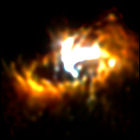 NASA reveals that its Boeing-747-mounted SOFIA (Stratospheric Observatory for Infrared Astronomy) telescope, during a 2011 flight in which its sensitive infrared sensors were aimed at the center of the Milky Way galaxy, captured an image of the super-massive black hole at the heart of the galaxy. A disc of dust and gas circling the center of the galaxy – seven light years across – lights up the image. The black hole is believed to have a mass of over four million times that of Earth’s sun.
NASA reveals that its Boeing-747-mounted SOFIA (Stratospheric Observatory for Infrared Astronomy) telescope, during a 2011 flight in which its sensitive infrared sensors were aimed at the center of the Milky Way galaxy, captured an image of the super-massive black hole at the heart of the galaxy. A disc of dust and gas circling the center of the galaxy – seven light years across – lights up the image. The black hole is believed to have a mass of over four million times that of Earth’s sun.
Mars in asteroid’s crosshairs
 Astronomers put the red planet on red alert after predicting 1-in-75 odds for an asteroid to collide with Mars on or near January 30th. The asteroid, discovered in November 2007, is on a trajectory that poses no threat to Earth but has better-than-usual odds of packing quite a wallop for Mars. The impact, if it does happen, could take place on the equator, near the Opportunity rover’s stomping (or, perhaps, roving) grounds, though NASA says it would pose no risk to Opportunity. A crater as large as Arizona’s Meteor Crater could be carved out of the Martian surface by any direct hit that does happen. Scientists prepare to watch the event with keen interest, as this event would be potentially cataclysmic if Earth was in danger, but provides a once-in-a-lifetime opportunity for observation on Mars.
Astronomers put the red planet on red alert after predicting 1-in-75 odds for an asteroid to collide with Mars on or near January 30th. The asteroid, discovered in November 2007, is on a trajectory that poses no threat to Earth but has better-than-usual odds of packing quite a wallop for Mars. The impact, if it does happen, could take place on the equator, near the Opportunity rover’s stomping (or, perhaps, roving) grounds, though NASA says it would pose no risk to Opportunity. A crater as large as Arizona’s Meteor Crater could be carved out of the Martian surface by any direct hit that does happen. Scientists prepare to watch the event with keen interest, as this event would be potentially cataclysmic if Earth was in danger, but provides a once-in-a-lifetime opportunity for observation on Mars.
Mittens required on Pluto
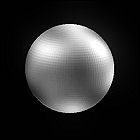 Scientists are already aware that Pluto is really cold, but recent observations suggest that it’s even colder than they had imagined. New radio telescope measurements of Pluto’s surface indicate that it’s a brisk -382 degrees Fahrenheit (scientists had earlier estimated a positively summery -364). Part of the reason for the slight chill in the air – if indeed there was any there – is that Pluto is on the outbound train. The tiny planet’s highly inclined orbit isn’t centered around the sun, while the solar system’s other worlds are more or less centered; part of Pluto’s orbit carries it further away from the sun and “under” the plane shared by the other planets. Curiously enough, however, the surface of Charon – Pluto’s nearly-identical-twin moon – is determined to be warmer than Pluto itself. The readings are taken by the Submillimeter Array in Hawaii by astronomers at the Harvard-Smithsonian Center for Astrophysics.
Scientists are already aware that Pluto is really cold, but recent observations suggest that it’s even colder than they had imagined. New radio telescope measurements of Pluto’s surface indicate that it’s a brisk -382 degrees Fahrenheit (scientists had earlier estimated a positively summery -364). Part of the reason for the slight chill in the air – if indeed there was any there – is that Pluto is on the outbound train. The tiny planet’s highly inclined orbit isn’t centered around the sun, while the solar system’s other worlds are more or less centered; part of Pluto’s orbit carries it further away from the sun and “under” the plane shared by the other planets. Curiously enough, however, the surface of Charon – Pluto’s nearly-identical-twin moon – is determined to be warmer than Pluto itself. The readings are taken by the Submillimeter Array in Hawaii by astronomers at the Harvard-Smithsonian Center for Astrophysics.
Eris
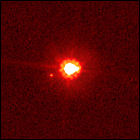 Astronomers at Palomar Observatory discover a body beyond Neptune’s orbit that initial observations show is larger than Pluto. Eris is quickly dubbed the tenth planet by the media and the scientific community, and it is later found to have a small moon of its own in a close orbit, which is later named Dysnomia. But events overtake Eris and Dysnomia before the science textbooks have a chance to be rewritten to include a tenth planet: Eris becomes a case study in an ongoing debate within the International Astronomical Union about the definition of a planet. In 2006, the IAU will establish a set of parameters which determine that Eris isn’t a planet – and then rewrites the history books by deciding that Pluto isn’t either.
Astronomers at Palomar Observatory discover a body beyond Neptune’s orbit that initial observations show is larger than Pluto. Eris is quickly dubbed the tenth planet by the media and the scientific community, and it is later found to have a small moon of its own in a close orbit, which is later named Dysnomia. But events overtake Eris and Dysnomia before the science textbooks have a chance to be rewritten to include a tenth planet: Eris becomes a case study in an ongoing debate within the International Astronomical Union about the definition of a planet. In 2006, the IAU will establish a set of parameters which determine that Eris isn’t a planet – and then rewrites the history books by deciding that Pluto isn’t either.
Comet Shoemaker-Levy 9
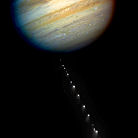 Astronomers on Earth discover a comet like none seen before: having flown close to Jupiter in July 1992, the comet has broken into multiple pieces in a configuration that its discoverers call “a string of pearls.” Calculations of the orbit of the newly detected comet, named Shoemaker-Levy 9 after the team that discovered it, reveal something stunning: the orbit of the fragments will bring them back to Jupiter in just over a year, at which point they are expected to collide with the planet rather than pass it by or go into orbit. Not only does this give Earth-based astronomers time to coordinate observations, but NASA has an ace in the hole: the entire event will be witnessed by the unmanned Galileo probe as it makes its final approach to the giant planet.
Astronomers on Earth discover a comet like none seen before: having flown close to Jupiter in July 1992, the comet has broken into multiple pieces in a configuration that its discoverers call “a string of pearls.” Calculations of the orbit of the newly detected comet, named Shoemaker-Levy 9 after the team that discovered it, reveal something stunning: the orbit of the fragments will bring them back to Jupiter in just over a year, at which point they are expected to collide with the planet rather than pass it by or go into orbit. Not only does this give Earth-based astronomers time to coordinate observations, but NASA has an ace in the hole: the entire event will be witnessed by the unmanned Galileo probe as it makes its final approach to the giant planet.
Voyager 2 and the lost moon of Neptune
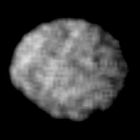 First spotted by Earth-based telescope observations in 1981, Neptune’s fourth-largest natural satellite was so tiny and dark that follow-up observations to confirm the discovery were unsuccessful…at least until Voyager 2 sights it on approach to the eighth planet, finding a tiny moon whose orbit corresponds to the theoretical orbit of the body originally sighted in 1981. In 1991, the International Astronomical Union will name this moon Larissa.
First spotted by Earth-based telescope observations in 1981, Neptune’s fourth-largest natural satellite was so tiny and dark that follow-up observations to confirm the discovery were unsuccessful…at least until Voyager 2 sights it on approach to the eighth planet, finding a tiny moon whose orbit corresponds to the theoretical orbit of the body originally sighted in 1981. In 1991, the International Astronomical Union will name this moon Larissa.
Supernova 1987A
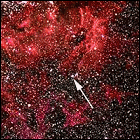 Astronomers both amateur and professional glimpse the first supernova to occur in the age of modern science. Given the name Supernova 1987A, the huge burst of light – visible to the naked eye in Earth’s southern hemisphere by the early summer months of 1987 before it begins fading out – is a collapsing star on the edge of the Tarantula Nebula. The star previously seen in that location is a blue supergiant, which wasn’t a likely candidate to go nova according to the existing theories of stellar evolution at the time. In the 1990s, the slowly expanding ring of debris rushing outward from Supernova 1987A becomes a favorite observation target for the Hubble Space Telescope. The supernova is more than 150,000 light years away from Earth’s solar system in the direction of the Large Magellenic Cloud.
Astronomers both amateur and professional glimpse the first supernova to occur in the age of modern science. Given the name Supernova 1987A, the huge burst of light – visible to the naked eye in Earth’s southern hemisphere by the early summer months of 1987 before it begins fading out – is a collapsing star on the edge of the Tarantula Nebula. The star previously seen in that location is a blue supergiant, which wasn’t a likely candidate to go nova according to the existing theories of stellar evolution at the time. In the 1990s, the slowly expanding ring of debris rushing outward from Supernova 1987A becomes a favorite observation target for the Hubble Space Telescope. The supernova is more than 150,000 light years away from Earth’s solar system in the direction of the Large Magellenic Cloud.
The disappearing moon of Neptune
 A team of American astronomers discovers what they believe is a third moon of Neptune from ground-based telescope observations, but S/1981N1 isn’t seen again for several years, so the discovery is left in the “unconfirmed” category…until it is next seen by Voyager 2 in 1989, confirming the original sighting many years later. In 1991, the International Astronomical Union will name this moon Larissa. (Voyager 2 photo of Larissa shown)
A team of American astronomers discovers what they believe is a third moon of Neptune from ground-based telescope observations, but S/1981N1 isn’t seen again for several years, so the discovery is left in the “unconfirmed” category…until it is next seen by Voyager 2 in 1989, confirming the original sighting many years later. In 1991, the International Astronomical Union will name this moon Larissa. (Voyager 2 photo of Larissa shown)
The Chicxulub Crater Theory
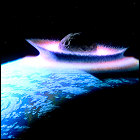 In the journal Science, in an article titled “Extraterrestrial Cause for the Cretaceous-Tertiary Extinction”, Nobel-Prize-winning physicist Luis Alvarez and his son, geologist Walter Alvarez, propose their theory that the 110-mile-wide Chicxulub Crater discovered in the past few decades on the northern tip of the Yucatan Peninsula in Mexico is evidence of a large asteroid collision with Earth, resulting in the widespread death of the dinosaurs 65 million years before the modern day. A contentious peer review of the published theory follows, with many opposing theories proposed, though the Chicxulub hypothesis is eventually accepted as the “smoking gun” that killed the dinosaurs (the theory of an asteroid collision with Earth causing the extinction had been in circulation since the 1950s; the Alvarez theory is the first to point to a specific geological feature as evidence).
In the journal Science, in an article titled “Extraterrestrial Cause for the Cretaceous-Tertiary Extinction”, Nobel-Prize-winning physicist Luis Alvarez and his son, geologist Walter Alvarez, propose their theory that the 110-mile-wide Chicxulub Crater discovered in the past few decades on the northern tip of the Yucatan Peninsula in Mexico is evidence of a large asteroid collision with Earth, resulting in the widespread death of the dinosaurs 65 million years before the modern day. A contentious peer review of the published theory follows, with many opposing theories proposed, though the Chicxulub hypothesis is eventually accepted as the “smoking gun” that killed the dinosaurs (the theory of an asteroid collision with Earth causing the extinction had been in circulation since the 1950s; the Alvarez theory is the first to point to a specific geological feature as evidence).
Solar Maximum Mission
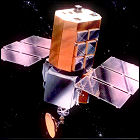 NASA launches the unmanned Solar Maximum Mission satellite atop a Delta 3910 rocket, to study cyclical solar flare activity from Earth orbit. Built by Fairchild and relying on a magnetic reaction wheel system to maintain precise aim at the sun, “Solar Max” suffers malfunctions in orbit, and will be able to carry out only limited observations by November 1980. In 1984, Solar Max will become the first satellite to be repaired in-orbit by a visiting space shuttle crew. After repairs, the satellite will be released, with its life span in orbit having effectively doubled. It will remain in orbit, and functional, through 1989.
NASA launches the unmanned Solar Maximum Mission satellite atop a Delta 3910 rocket, to study cyclical solar flare activity from Earth orbit. Built by Fairchild and relying on a magnetic reaction wheel system to maintain precise aim at the sun, “Solar Max” suffers malfunctions in orbit, and will be able to carry out only limited observations by November 1980. In 1984, Solar Max will become the first satellite to be repaired in-orbit by a visiting space shuttle crew. After repairs, the satellite will be released, with its life span in orbit having effectively doubled. It will remain in orbit, and functional, through 1989.
High Energy Astronomy Observatory 3
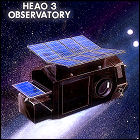 NASA launches the third and final High Energy Astronomy Observatory satellite into Earth orbit, where it begins studying gamma ray sources and the nature of cosmic rays. There is also an experiment package designed to detect heavy atomic nuclei. HEAO-3 will remain in service through May 1981, and it will re-enter Earth’s atmosphere in December of that year.
NASA launches the third and final High Energy Astronomy Observatory satellite into Earth orbit, where it begins studying gamma ray sources and the nature of cosmic rays. There is also an experiment package designed to detect heavy atomic nuclei. HEAO-3 will remain in service through May 1981, and it will re-enter Earth’s atmosphere in December of that year.
Adrastea
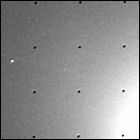 Tiny Adrastea, a small, asteroid-like moon of Jupiter, is discovered in photos returned by Voyager 2 during its flyby of the planet. Adrastea orbits along the outer edge of Jupiter’s ring system, and is likely to be the body from which material for that ring is ejected. Its close orbit carries it around the planet at a speed faster than Jupiter’s rotation, one of the few bodies in the solar system locked into such a fast orbit.
Tiny Adrastea, a small, asteroid-like moon of Jupiter, is discovered in photos returned by Voyager 2 during its flyby of the planet. Adrastea orbits along the outer edge of Jupiter’s ring system, and is likely to be the body from which material for that ring is ejected. Its close orbit carries it around the planet at a speed faster than Jupiter’s rotation, one of the few bodies in the solar system locked into such a fast orbit.
High Energy Astronomy Observatory 2: Einstein
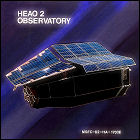 NASA launches the second High Energy Astronomy Observatory satellite, which is given the nickname “Einstein” when it enters service. HEAO-2 is a dedicated X-ray telescope with unprecedented sensitivity and accuracy, and will remain in service through March 1982, re-entering Earth’s atmosphere a week afterward.
NASA launches the second High Energy Astronomy Observatory satellite, which is given the nickname “Einstein” when it enters service. HEAO-2 is a dedicated X-ray telescope with unprecedented sensitivity and accuracy, and will remain in service through March 1982, re-entering Earth’s atmosphere a week afterward.
Charon
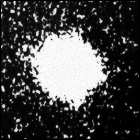 Astronomer James Christy, conducting observations of Pluto at the United States Naval Observatory, discovers a bulging shape present in some photos he’s taken of Pluto, but absent in others. Though the find meets with some skepticism, he has discovered the largest moon of Pluto, Charon, which has a mass of over 50% that of its parent body. Orbiting at only 11,000 miles from Pluto’s surface, Charon has a radius of 750 miles. Within 20 years, closer telescopic examination (including observations using the Hubble Space Telescope) confirm that Charon is separate from Pluto. Since the two bodies are relatively similar in mass, one doesn’t actually orbit the other; rather, they both orbit a center of mass – a barycenter – that lies close to, but not within, Pluto. Further observations in the 21st century lead to the unexpected discovery of four further satellites of Pluto.
Astronomer James Christy, conducting observations of Pluto at the United States Naval Observatory, discovers a bulging shape present in some photos he’s taken of Pluto, but absent in others. Though the find meets with some skepticism, he has discovered the largest moon of Pluto, Charon, which has a mass of over 50% that of its parent body. Orbiting at only 11,000 miles from Pluto’s surface, Charon has a radius of 750 miles. Within 20 years, closer telescopic examination (including observations using the Hubble Space Telescope) confirm that Charon is separate from Pluto. Since the two bodies are relatively similar in mass, one doesn’t actually orbit the other; rather, they both orbit a center of mass – a barycenter – that lies close to, but not within, Pluto. Further observations in the 21st century lead to the unexpected discovery of four further satellites of Pluto.
While you were out: 6EQUJ5 called
 Radio astronomers at Ohio State University observe a signal from the direction of the constellation Sagittarius that seems to jump out from the usual cosmic background noise. The 72-second signal is quickly dubbed the “Wow Signal” (thanks to a hastily scribbled note), and is considered by some to be a strong candidate for a message from an extraterrestrial civilization since its frequency falls almost exactly on the hydrogen line of the electromagnetic spectrum, a wavelength closely watched by the SETI program. But more powerful telescopes listening in on the same region of space in the years and decades to come pick up no further signals. Scientists involved in the initial analysis later admit that the “message” may be of Earthly origin, reflected back from an object in space.
Radio astronomers at Ohio State University observe a signal from the direction of the constellation Sagittarius that seems to jump out from the usual cosmic background noise. The 72-second signal is quickly dubbed the “Wow Signal” (thanks to a hastily scribbled note), and is considered by some to be a strong candidate for a message from an extraterrestrial civilization since its frequency falls almost exactly on the hydrogen line of the electromagnetic spectrum, a wavelength closely watched by the SETI program. But more powerful telescopes listening in on the same region of space in the years and decades to come pick up no further signals. Scientists involved in the initial analysis later admit that the “message” may be of Earthly origin, reflected back from an object in space.